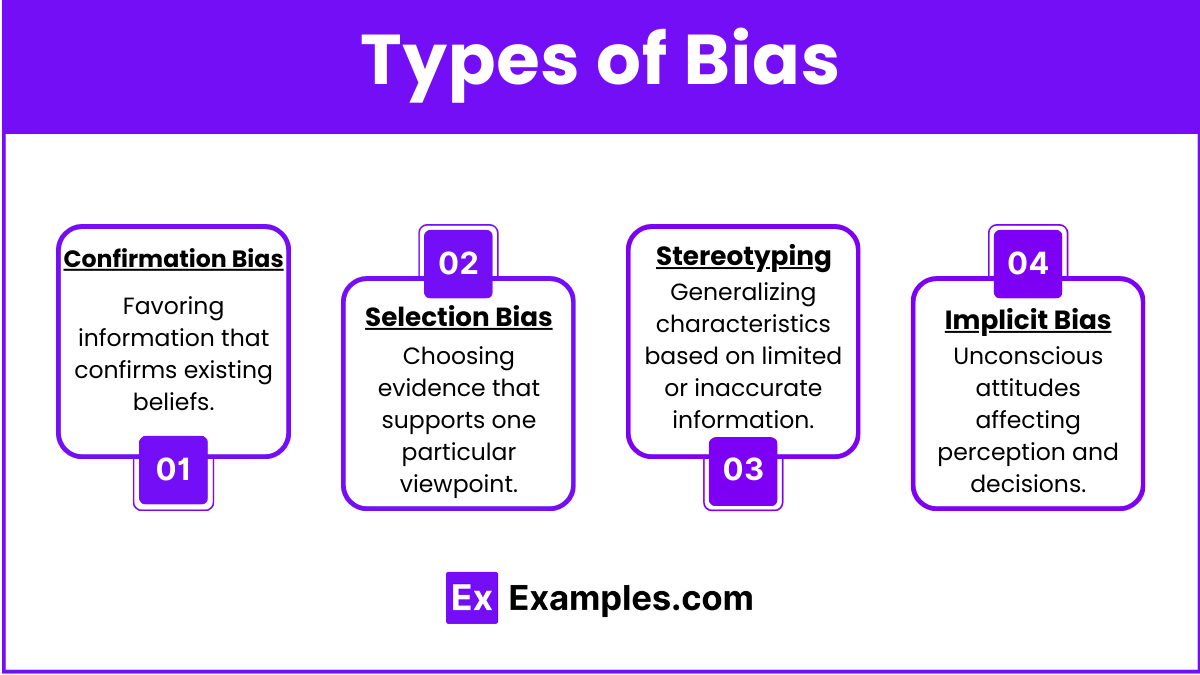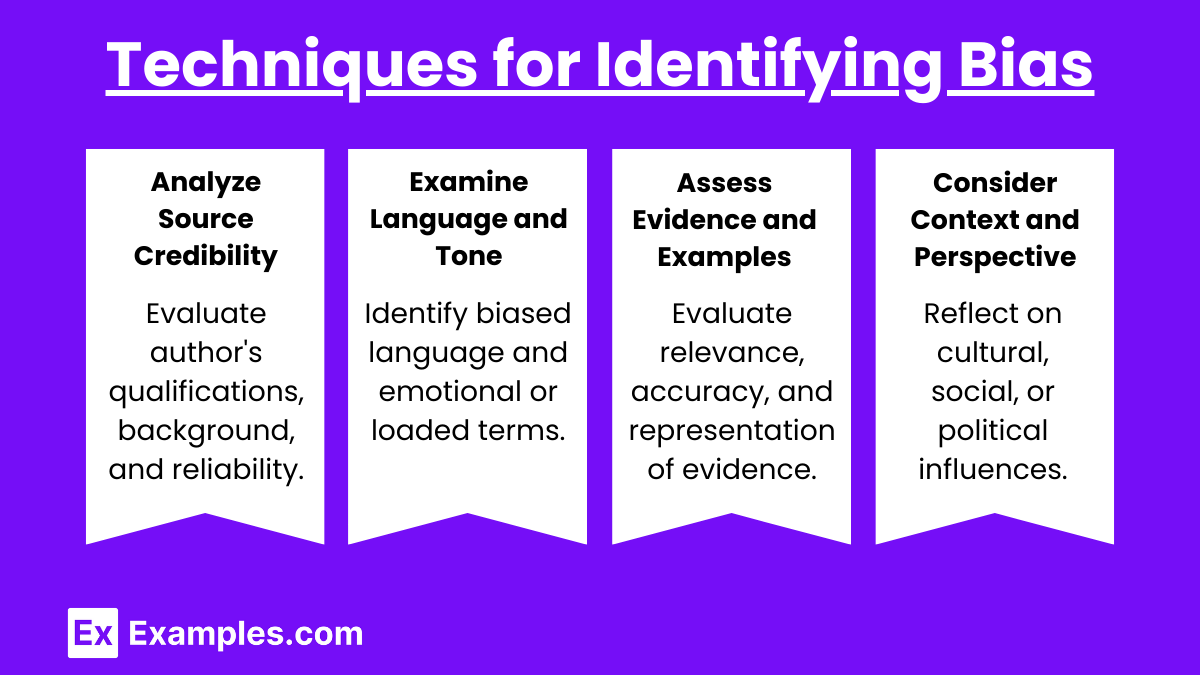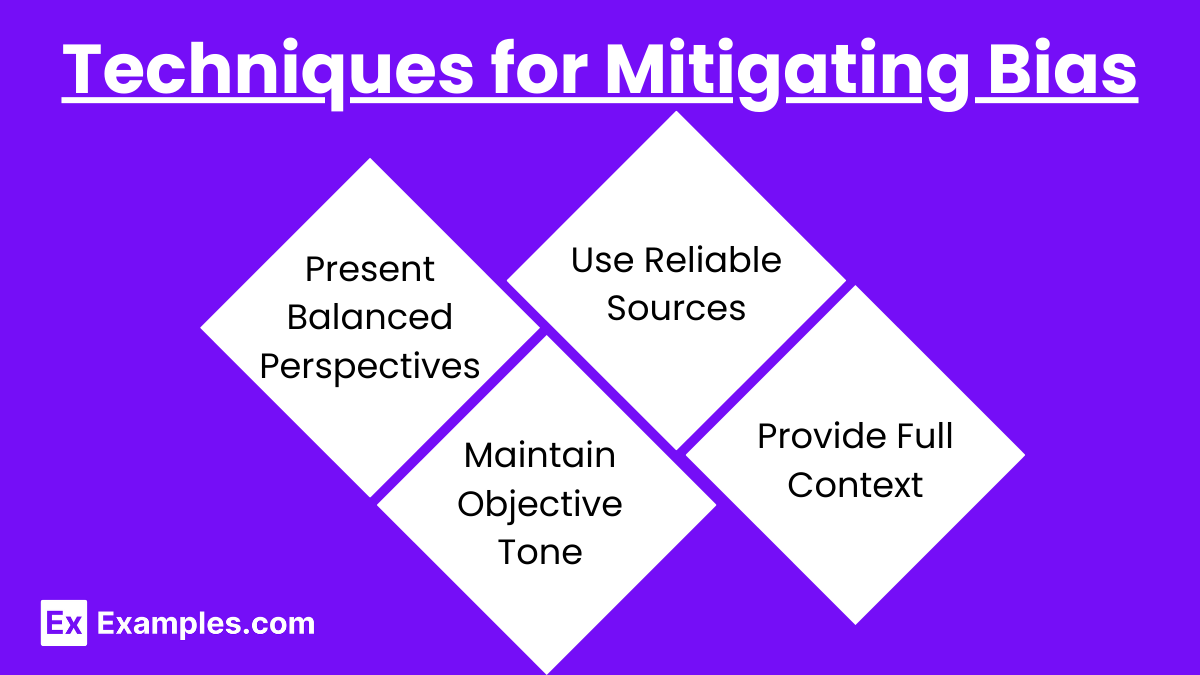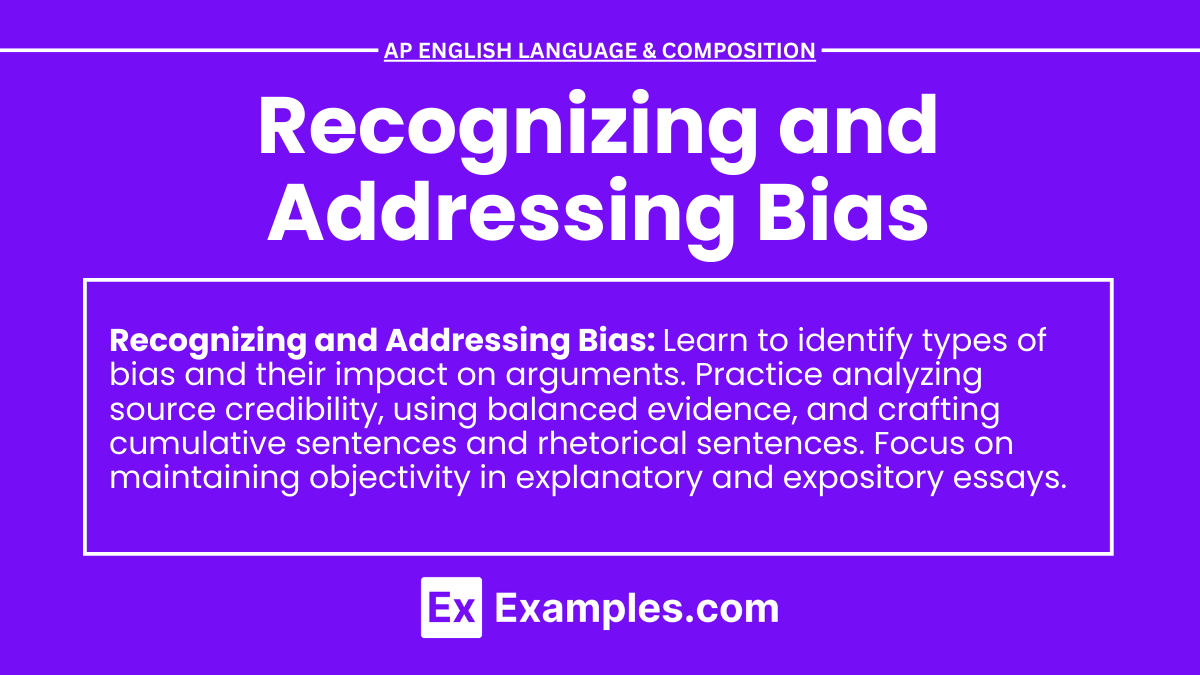In the AP English Language and Composition exam, recognizing and addressing bias is vital for crafting fair and persuasive essays. Bias can undermine the credibility of your argumentative writing and argumentative speech by distorting the truth. By using rhetorical sentences and cumulative sentences, you can effectively highlight multiple perspectives and mitigate bias, ensuring your arguments are balanced and well-supported. Mastering this skill not only enhances the clarity and impact of your writing but also demonstrates your critical thinking and ethical consideration, essential for producing compelling and credible essays.
Free AP English Language and Composition Practice Test
Learning Objectives
By studying the topic of recognizing and addressing bias, students will achieve several key learning objectives. They will learn to enhance their critical thinking skills by identifying and mitigating bias in various forms of writing. Students will develop the ability to craft cumulative sentences and rhetorical sentences that present balanced perspectives. They will understand how to recognize bias and maintain objectivity in explanatory essays and expository essays. Additionally, they will master the art of refining their final thesis statement to ensure it is unbiased and well-supported. Mastery of these techniques will enable students to produce fair, credible, and persuasive essays.
Understanding Bias
Definition
Bias is a tendency to favor one perspective, group, or outcome over others in an unfair manner. It can stem from personal beliefs, cultural influences, or misinformation.
Types of Bias

Confirmation Bias: Favoring information that confirms pre-existing beliefs while disregarding contradictory evidence.
Selection Bias: Choosing evidence or examples that support a particular viewpoint while ignoring others.
Stereotyping: Generalizing characteristics or behaviors of a group based on limited or inaccurate information.
Implicit Bias: Unconscious attitudes or stereotypes that influence perception and decision-making.
Recognizing Bias
Techniques for Identifying Bias

Analyze Source Credibility
Check the author's background, qualifications, and potential conflicts of interest.
Evaluate the publication or platform for reliability and reputation.
Examine Language and Tone
Identify emotionally charged or loaded language that may indicate bias.
Look for one-sided arguments that lack balance.
Assess Evidence and Examples
Determine if the evidence is selectively presented to support a particular view.
Check for the omission of relevant facts or perspectives.
Consider Context and Perspective
Reflect on the cultural, social, or political context that might influence the viewpoint.
Recognize any underlying assumptions or agendas.
Addressing Bias
Techniques for Mitigating Bias

Present Balanced Perspectives
Include multiple viewpoints and counterarguments to provide a comprehensive analysis.
Use cumulative sentences to compare and contrast different perspectives.
Use Reliable Sources
Cite credible, peer-reviewed, and reputable sources to support your arguments.
Avoid sources with known biases or questionable reliability.
Maintain Objective Tone
Use neutral, factual language rather than emotive or persuasive language.
Avoid personal attacks or unsupported generalizations.
Provide Full Context
Ensure that all relevant information and background are included to give a complete picture.
Acknowledge limitations and uncertainties in the evidence.
Examples
Example 1: Recognizing Bias
Biased Statement: "All politicians are corrupt and cannot be trusted." Recognizing Bias: The statement uses a sweeping generalization without evidence and reflects a negative stereotype.
Example 2: Addressing Bias
Balanced Statement: "While some politicians have been involved in corruption, many work ethically to serve their constituents. It is important to evaluate each politician based on their actions and integrity." Addressing Bias: This statement acknowledges multiple perspectives and avoids generalization.


